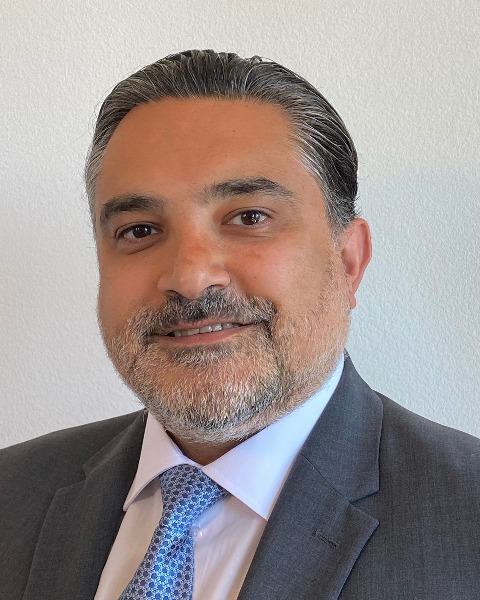SIR 2025
Embolization
Scientific Session
Outcomes by key prognostic factors in EMERALD-1: a Phase 3 study of durvalumab ± bevacizumab with transarterial chemoembolization (TACE) in participants with embolization-eligible unresectable hepatocellular carcinoma (uHCC)

Nadine Abi-Jaoudeh, MD, FSIR
Professor of Radiology
University of California, United States- MK
Masatoshi Kudo, MD, PhD
Professor and Chairman Department of Gastroenterology and Hepatology
Kindai University Faculty of Medicine, Japan - SC
Stephen L. Chan, MD
N/A
Department of Clinical Oncology, Prince of Wales Hospital, Sir Yue-Kong Pao Center for Cancer, The Chinese University of Hong Kong, China (People's Republic) - RL
Riccardo Lencioni, MD
N/A
Department of Diagnostic and Interventional Radiology, University of Pisa School of Medicine, Italy - TD
Thomas Decaens, MD, PhD
Professor of Medecine
Université Grenoble Alpes, INSERM U1209, France - JE
Joseph P. Erinjeri, MD PhD
Attending
Memorial Sloan Kettering Cancer Center, United States - SQ
Shukui Qin, MD
N/A
Cancer Center of Nanjing, Jinling Hospital, China (People's Republic) - ZR
Zhenggang Ren, PhD
Department of Liver Surgery
Zhongshan Hospital, Fudan University, China (People's Republic) - MB
Mohamed Bouattour, MD
N/A
AP-HP Hôpital Beaujon, Liver Cancer and Innovative Therapy, France .jpg)
Yasuaki Arai, MD, FSIR
Guest researcher
National Cancer Center Hospital, Japan- JH
Jeong Heo, MD
N/A
Department of Internal Medicine, College of Medicine, Pusan National University and Biomedical Research Institute, Pusan National University Hospital, Republic of Korea - VB
Valeriy V. Breder, MD
N/A
Department of Chemotherapy, N. N. Blokhin National Medical Research Center of Oncology, Russia 
Farshid Dayyani, MD, PhD (he/him/his)
Professor of Clinical Medicine
University of California Irvine, United States- AA
Alejandro Molina Alavez, MD
N/A
Medical Oncology Department, Oncology Clinical Research and Care Center, Mexico - JP
Joong-Won Park, MD, PhD
Adjunct Professor
National Cancer Center, Republic of Korea - JY
Jung-Hwan Yoon, MD
N/A
Department of Internal Medicine and Liver Research Institute, Seoul National University College of Medicine, Republic of Korea - KK
Kwong-Ming Kee, MD
N/A
Division of Hepato-Gastroenterology, Department of Internal Medicine, Kaohsiung Chang Gung Memorial Hospital and Chang Gung University College of Medicine, Taiwan (Republic of China) - TS
Tanita Suttichaimongkol, MD
N/A
Division of Gastroenterology and Hepatology, Department of Medicine, Faculty of Medicine, Khon Kaen University, Thailand - YI
Yoshitaka Inaba, n/a
Professor
Aichi Cancer Center Hospital, Japan - RG
Rebecca Griffin, None
N/A
Oncology Biometrics, Late Oncology Statistics, AstraZeneca, United Kingdom - MZ
Magdalena Zotkiewicz, None
N/A
Oncology Biometrics, Late Oncology Statistics, AstraZeneca, Poland - CM
Claire Morgan, None
N/A
Global Patient Safety Oncology, AstraZeneca, United States - SA
Sajid Ali, None
N/A
Global Medicines Development, AstraZeneca, United Kingdom - KB
Kavitha Balaji, None
N/A
Global Medical Affairs, AstraZeneca, United States - BS
Bruno Sangro, MD, PhD
Director of the Liver Unit
Clinica Universidad de Navarra and CIBEREHD, Spain
Presenting Author(s)
Author/Co-author(s)
EMERALD-1 (NCT03778957) demonstrated a significant improvement in progression-free survival (PFS) for durvalumab (D) + bevacizumab (B) + TACE vs placebos (PBOs) + TACE in participants (pts) with embolization-eligible uHCC{1}. The population for embolization-eligible uHCC is heterogenous, with outcomes in HCC influenced by key prognostic factors, such as liver function or tumor burden. Here, we assessed outcomes by baseline liver function, as measured by albumin-bilirubin (ALBI) grade (gr), and by baseline tumor burden, based on tumor number and diameter as measured by the up-to-7 criterion.
Materials and Methods:
EMERALD-1 study design has been presented{1}. This exploratory analysis included pts treated with D + B + TACE and PBOs + TACE (herein TACE). PFS and time to progression (TTP; BICR RECIST 1.1) in the intent-to-treat (ITT) population and safety in the safety analysis set (pts received ≥1 dose of study treatment [tx], regardless of randomization) are reported by baseline liver function (ALBI gr 1 or 2; no pts had ALBI gr 3) or tumor burden (within [≤7] or beyond [ >7] up-to-7 criterion).
Results: PFS and TTP improved with D + B + TACE vs TACE in the ALBI gr 1 and 2, and the ≤7 and >7 groups (Table). Max. gr 3–4 tx-related adverse event rates were higher with D + B + TACE vs TACE, regardless of baseline liver function (ALBI gr 1: 27.8% vs 5.7%; ALBI gr 2: 25.0% vs 6.5%) or baseline tumor burden (≤7: 24.4% vs 9.1%; >7: 29.2% vs 3.0%); differences were reduced when adjusted for duration of exposure (event rate per 100 pt year, ALBI gr 1: 17.3 vs 4.7; ALBI gr 2: 20.2 vs 6.4; tumor burden ≤7: 15.9 vs 6.5; >7: 21.6 vs 3.4). No tx‑related deaths with D + B + TACE were observed.
Conclusion: PFS and TTP benefits were observed with D + B + TACE vs TACE with manageable safety, regardless of baseline liver function or baseline tumor burden. Data support a favorable risk‑benefit profile with D + B + TACE in embolization-eligible uHCC.


.jpg)